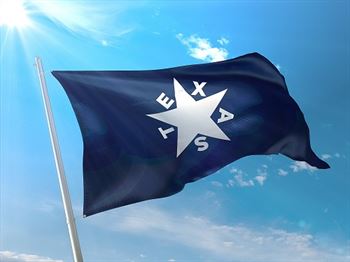Small world, ain't it?
My 4g-grandfather (a couple of very long generations in there) and one of his sons fought at the Battle of Nacogdoches, too. I'm descended from a daughter, so the son was my 4th great-grand-uncle. After house-to-house fighting, the Mexican force retreated to the primary fortification, the cuartel. The main band of Texans gathered north of the town and came down North Street. My grandfather and his son were with a group that had come over from the San Augustine area to the east; they followed the banks of Lanana Creek and circled around to approach the town square from the south. During the night, Colonel José de las Piedras, commander of the Mexican Twelfth Permanent Battalion at Nacogdoches, opted to evacuate his men and head for San Antonio.
Before dawn on August 3, James Carter and Jim Bowie organized a total of 17 men to go after Piedras's march west. The small band caught up with the Mexican troops at the Angelina River, and what ensued was a running, guerrilla-warfare skirmish that moved upriver toward Linwood Crossing. Near what is now Douglas, Piedras's men turned on him and a captain, Francisco Medina, assumed command and surrendered to the Texans, who marched the whole lot back to Nacogdoches. Asa Edwards took Piedras to San Felipe and turned him over to Stephen F. Austin where, after a while, he was released and returned to Mexico. Jim Bowie took the lead to march what was left of the Mexican Twelfth Permanent Battalion to San Antonio.
There were only a little more than 100 Texans who remained after the first Mexican cavalry charge and who did the real fighting in the Battle of Nacogdoches. The bulk of the hastily-formed "National Militia" under James Bullock withdrew and didn't engage in the subsequent up-close work. Out of those hundred, three of them were your 6g-grandfather and my 4g-grandfather and his son. In Piedras's unit, 47 were killed and somewhat more than 40 wounded. On the Texan side, a total of 4 were killed and 4 wounded.
My 4g-grandfather went on to represent the Ayish Bayou District at the Convention of 1832. He was elected alcalde of San Augustine in 1833. And in 1836 the president of the new republic, Sam Houston, appointed him chief justice of the recently organized San Augustine County.
James Bullock went on become commander of the Texas forces in the rebellion, and my 4g-grand-uncle was his aide for a time. He also served under Captain John English (but wasn't at the siege of Bexar), and under Captain William Scurlock. He was chosen lieutenant colonel of the militia at San Augustine in February 1837, and was elected to the Texas Senate of the Sixth Congress from Jasper and Jefferson counties and served in Austin from November 1, 1841, to February 5, 1842, and in Houston from June 27 to July 23, 1842. He later took on the role his father had held as chief justice of San Augustine County and served three terms. He is mentioned on two Texas Centennial historical markers.
